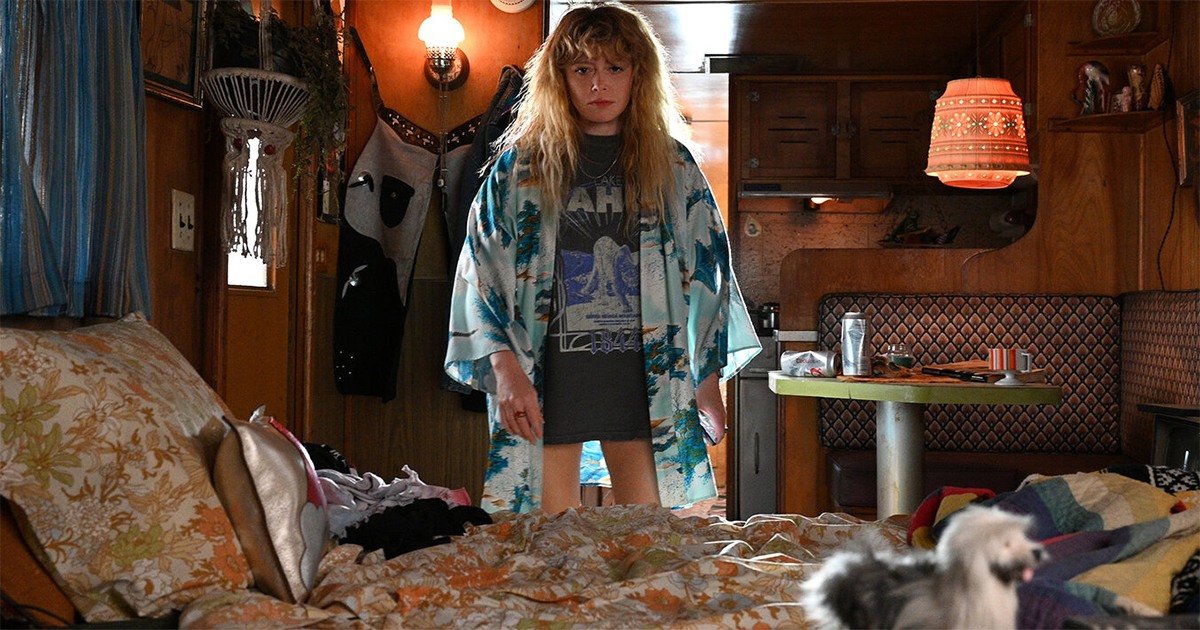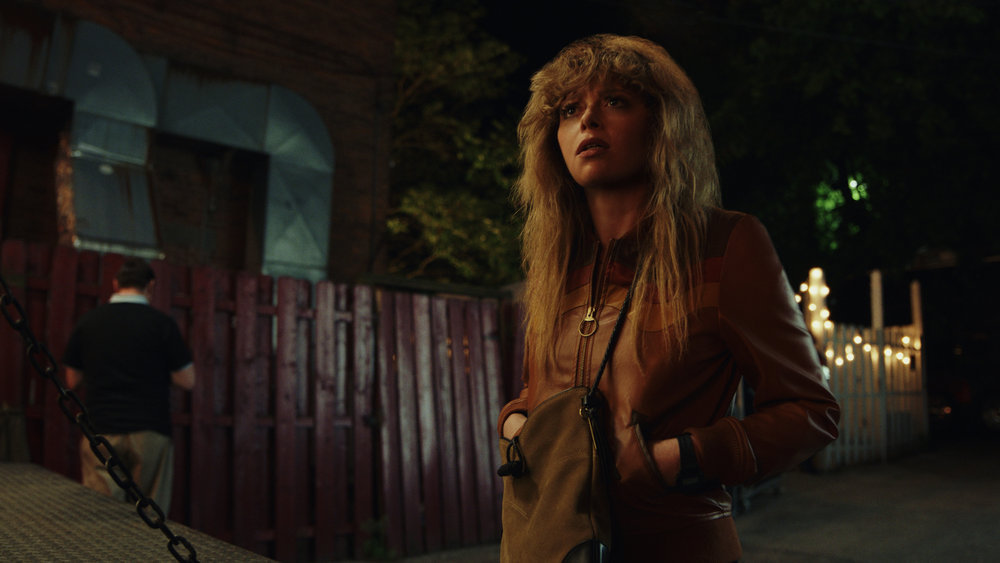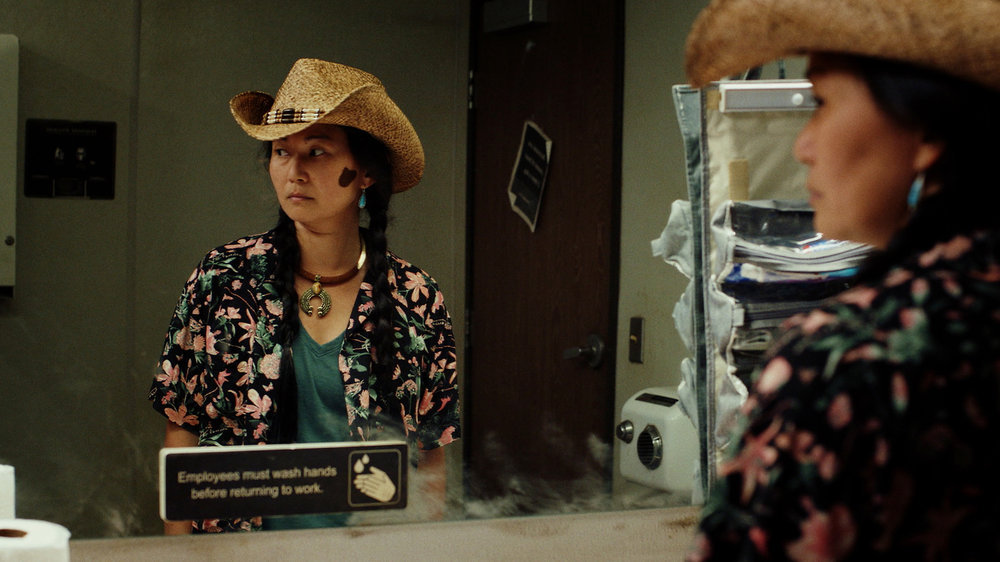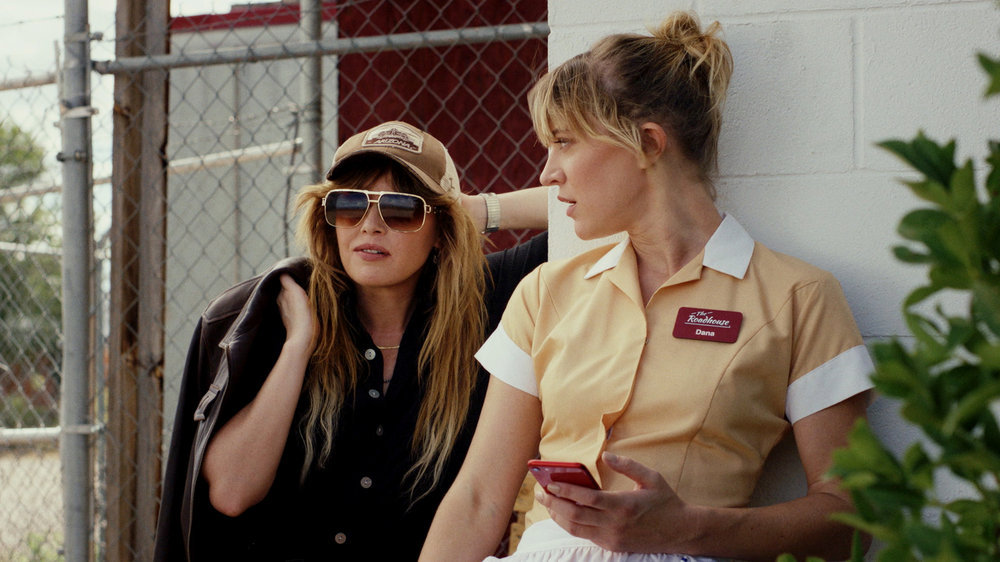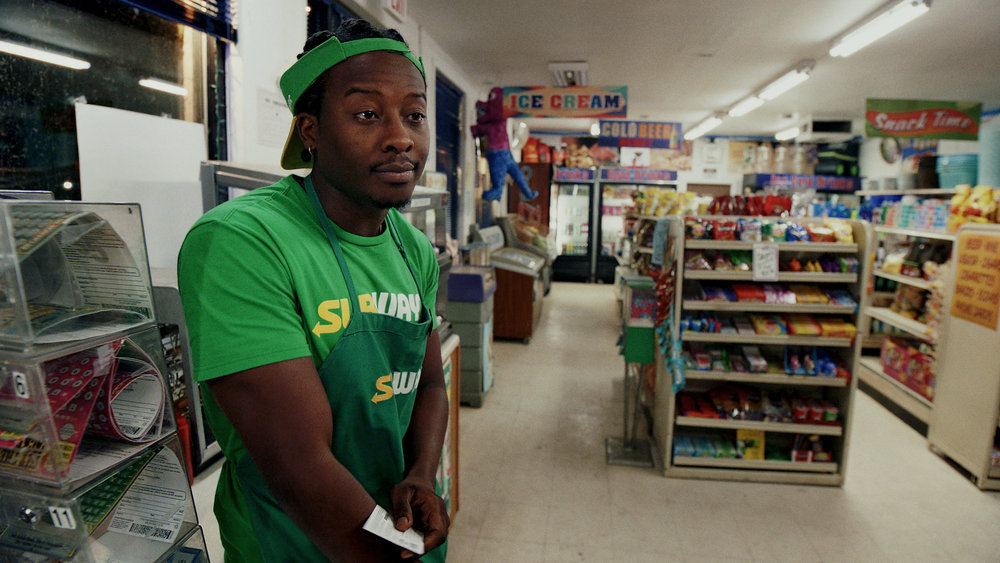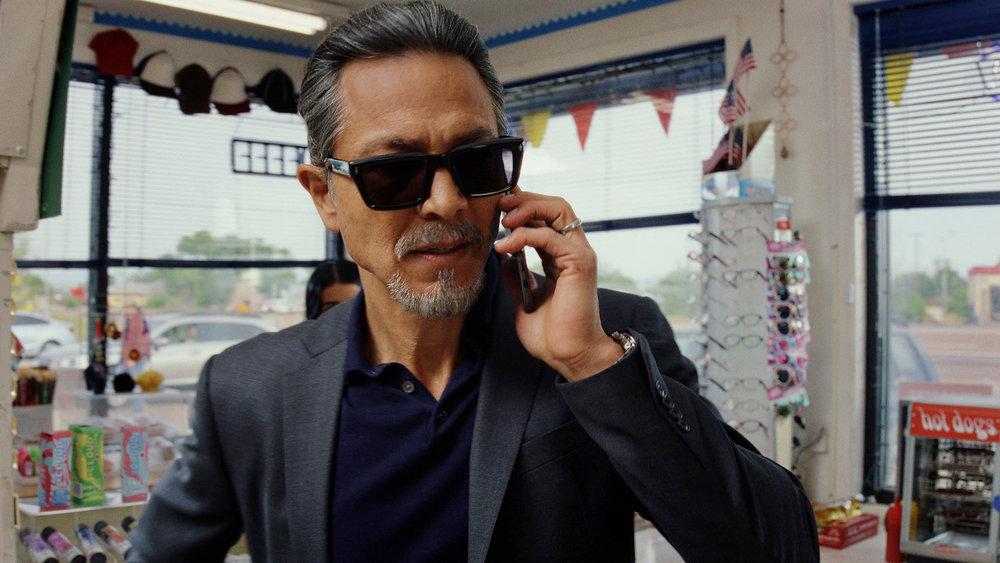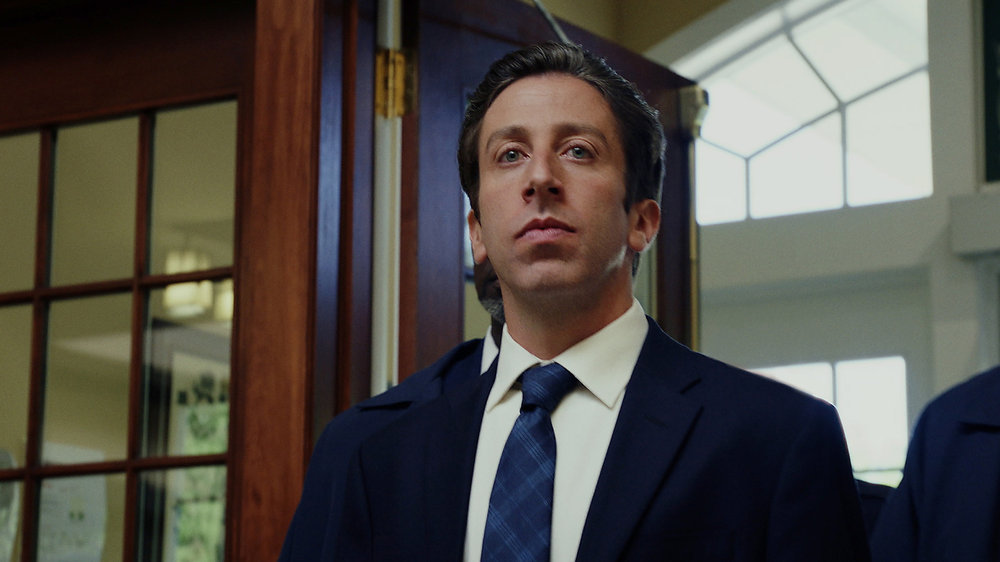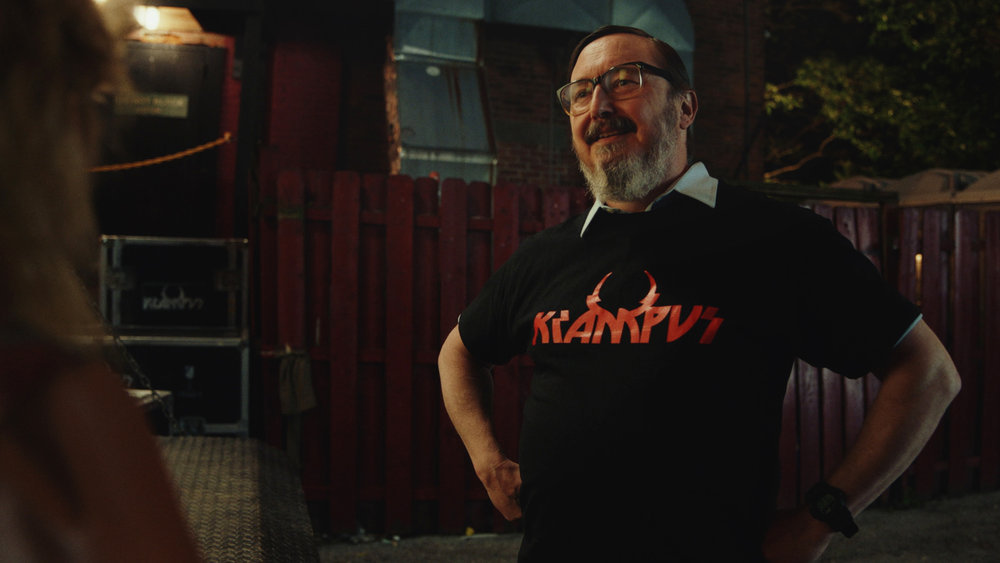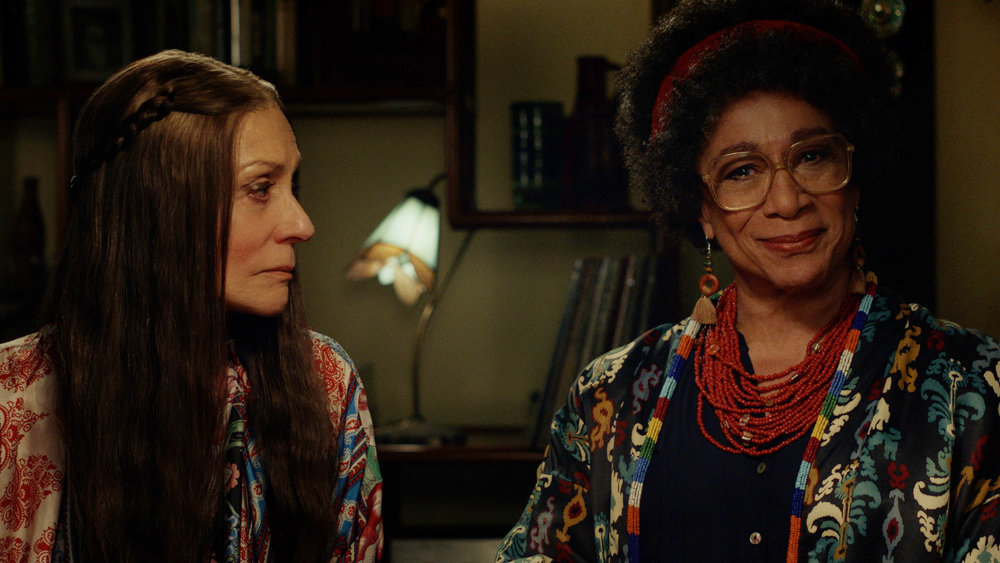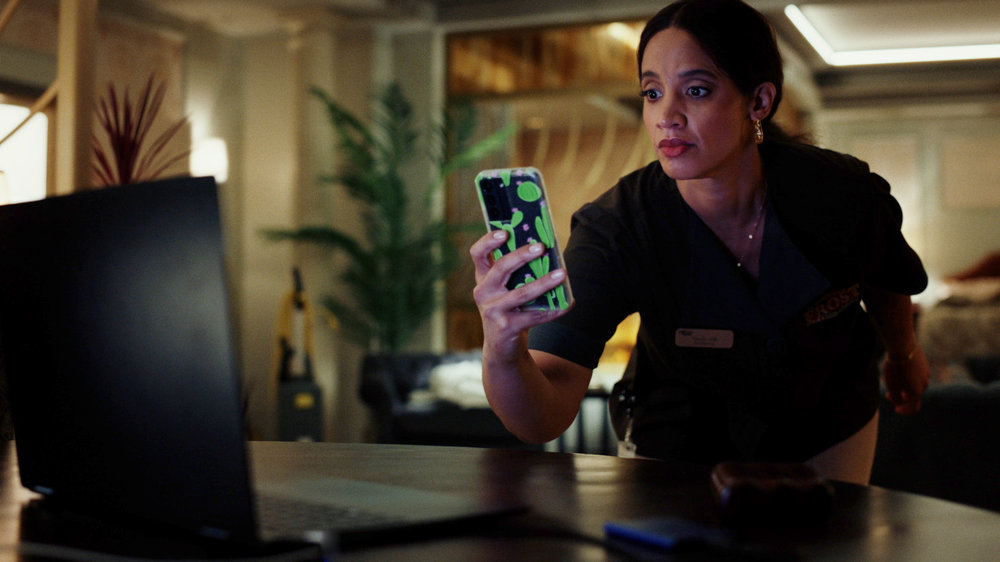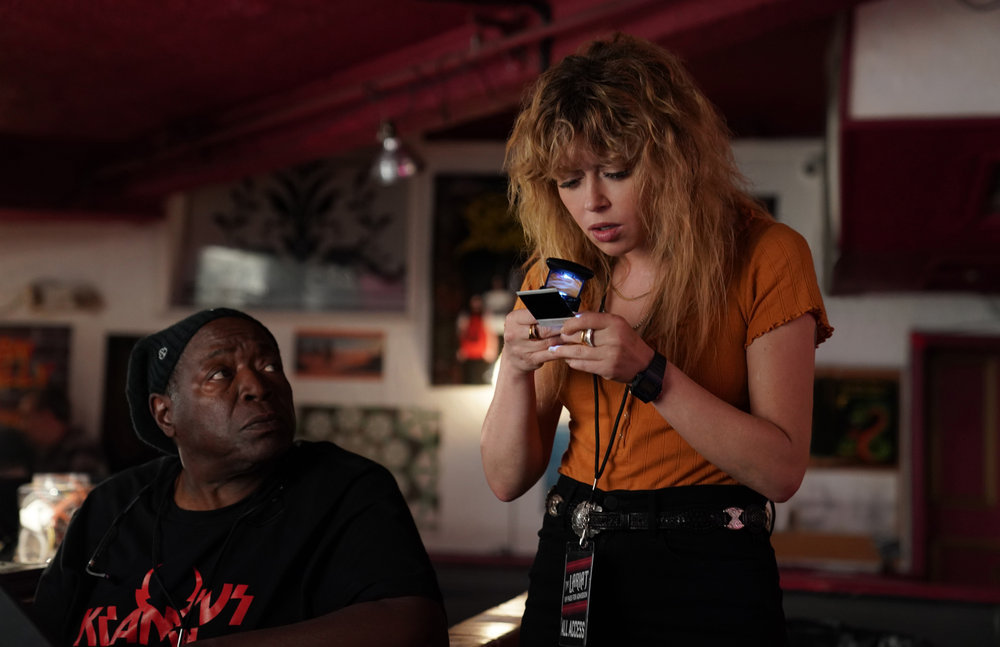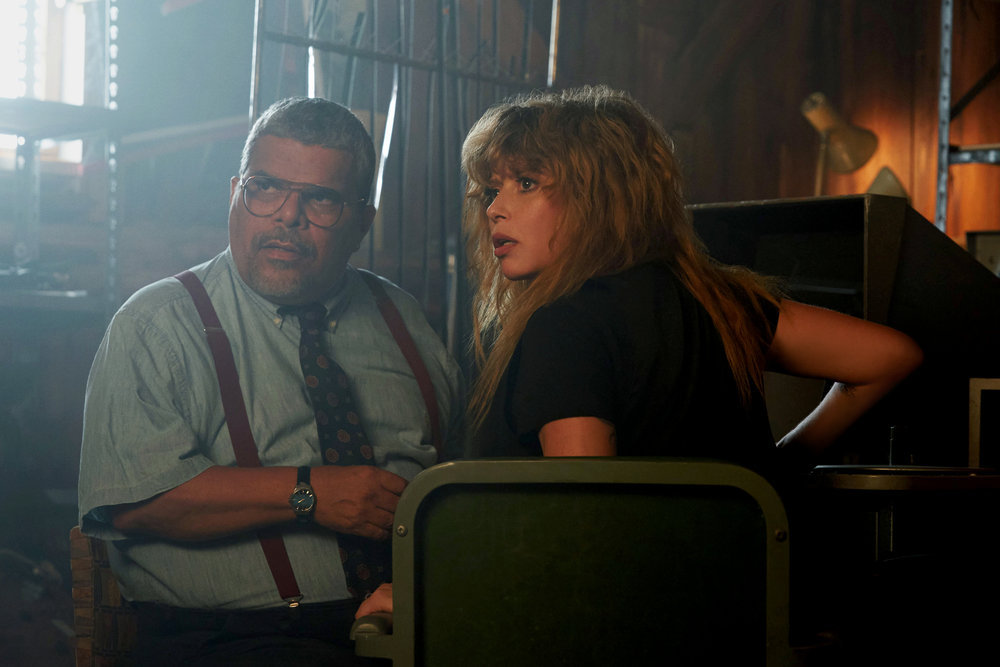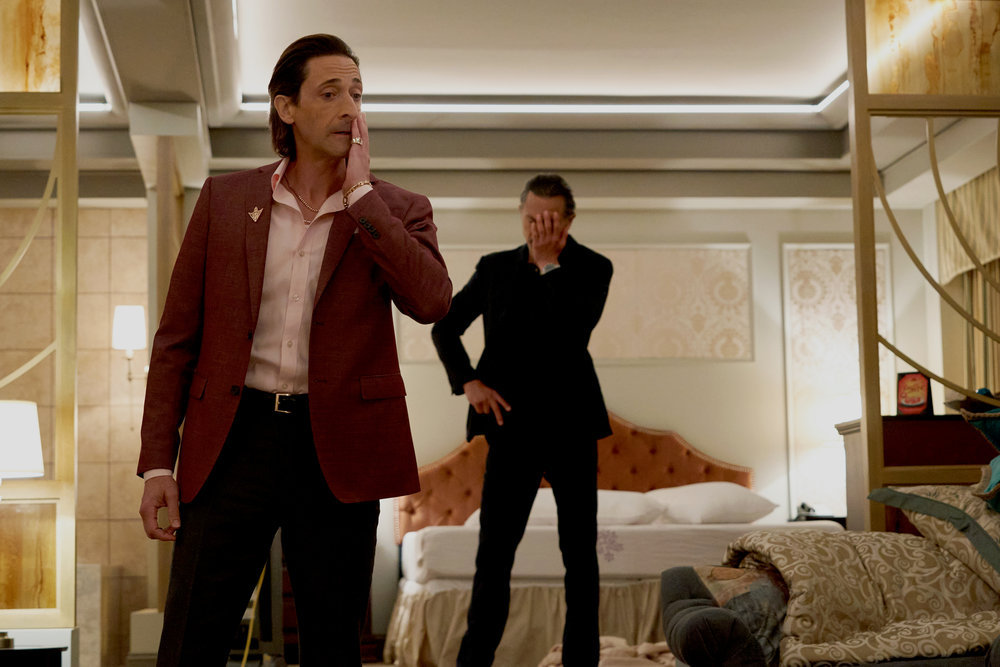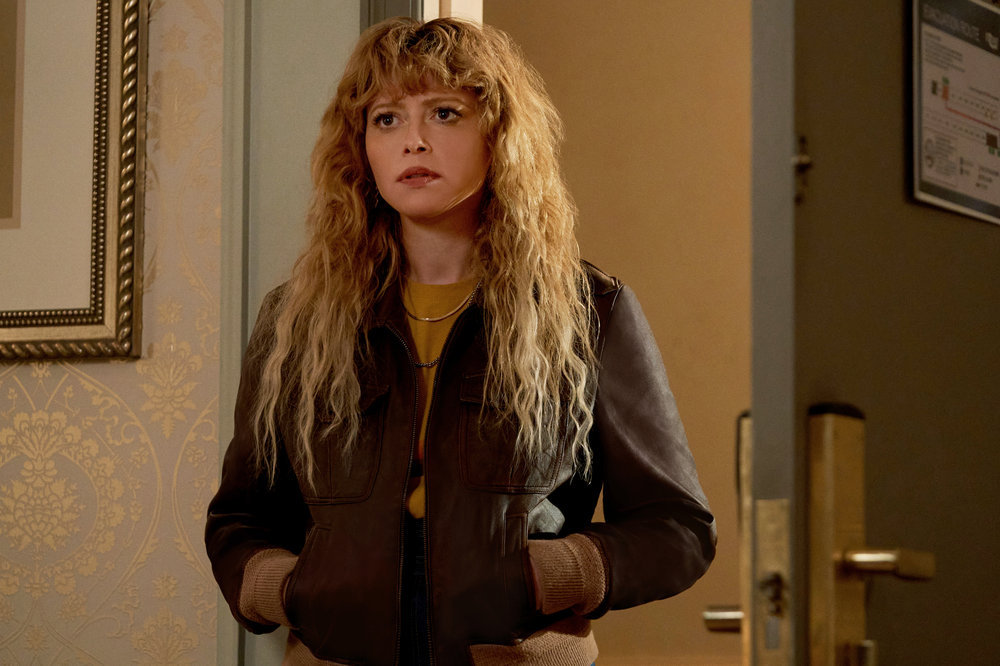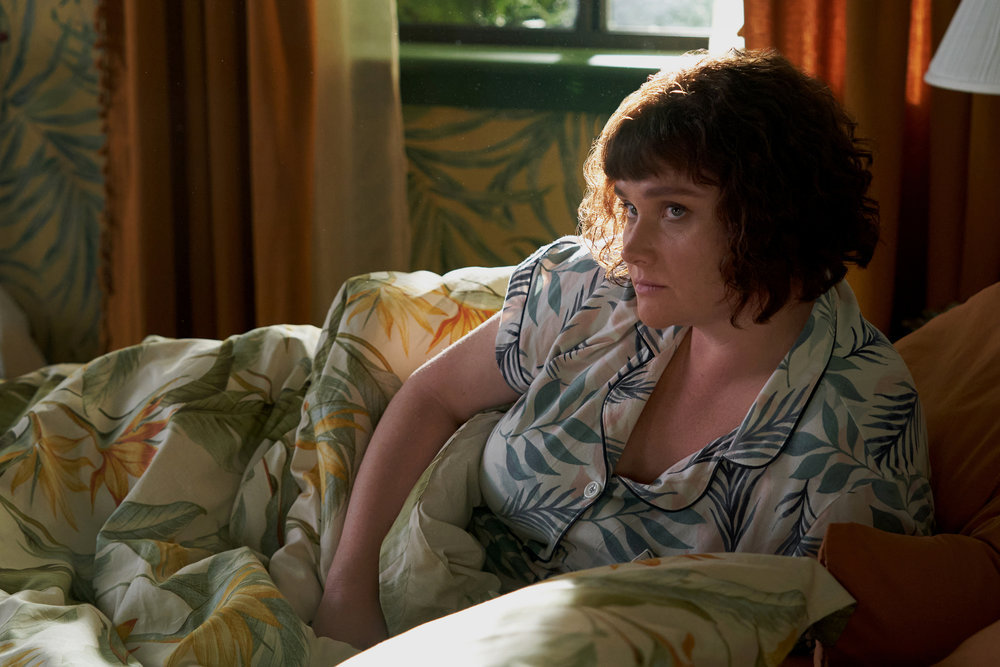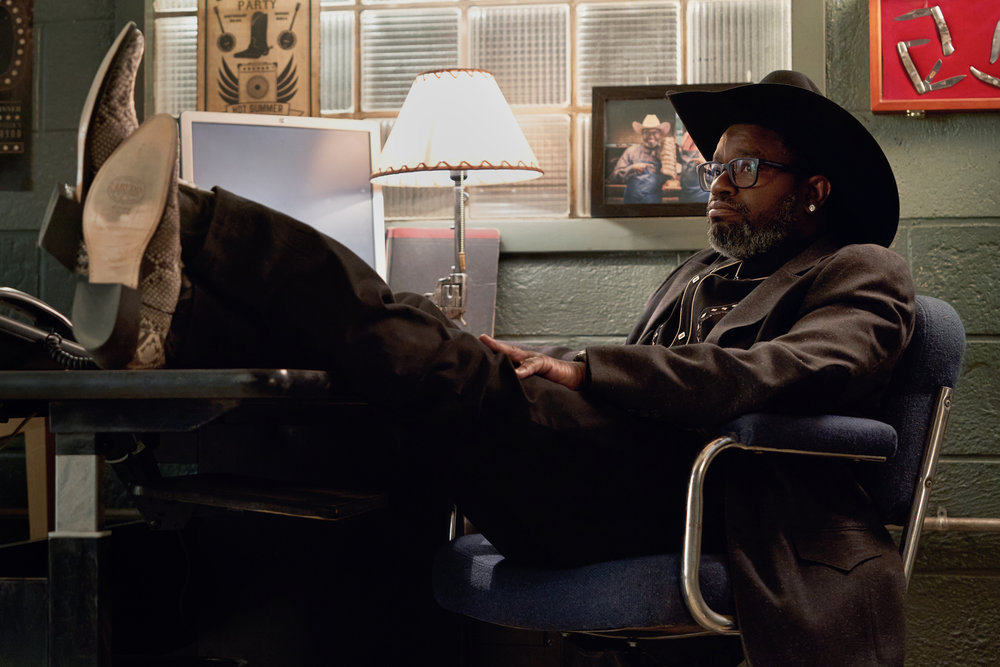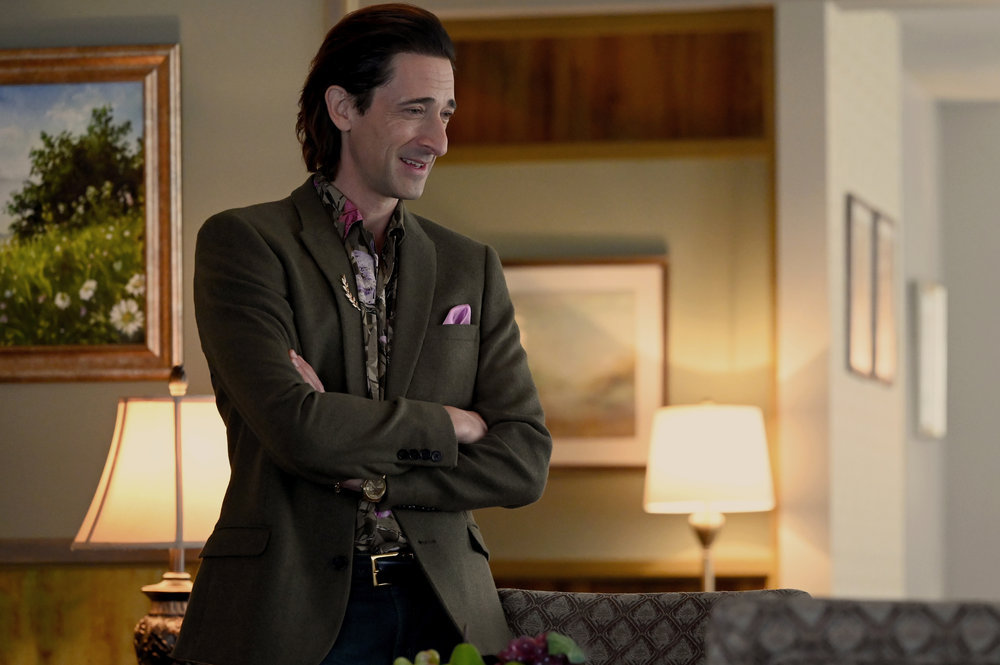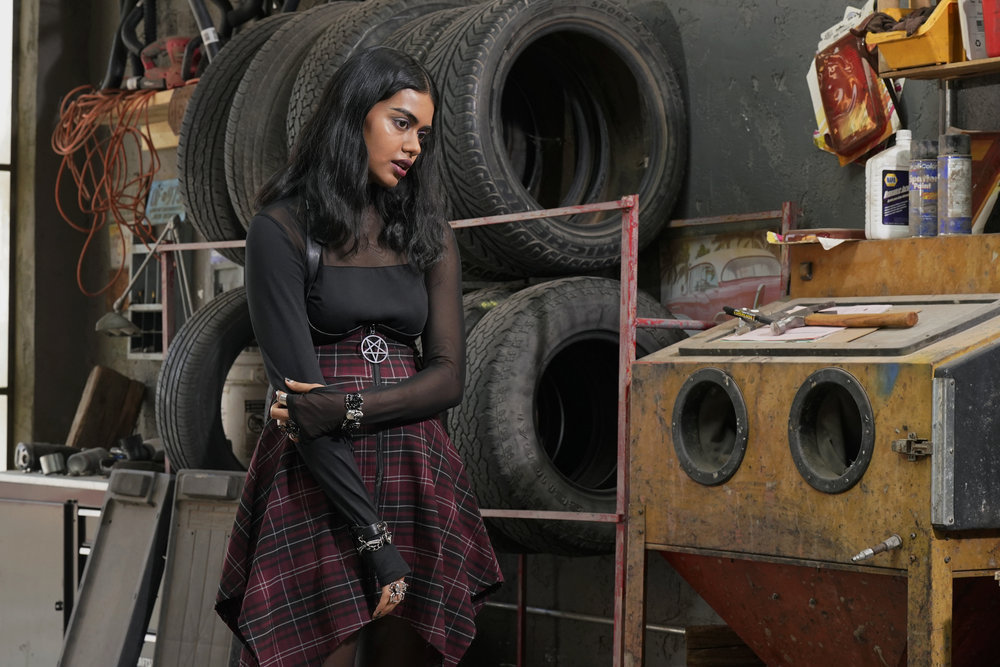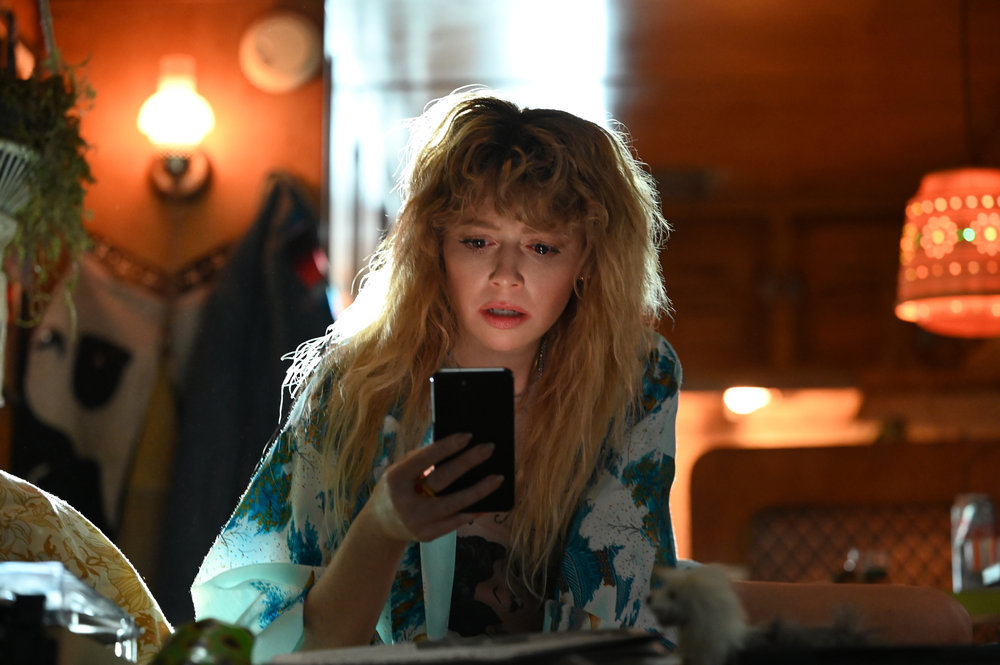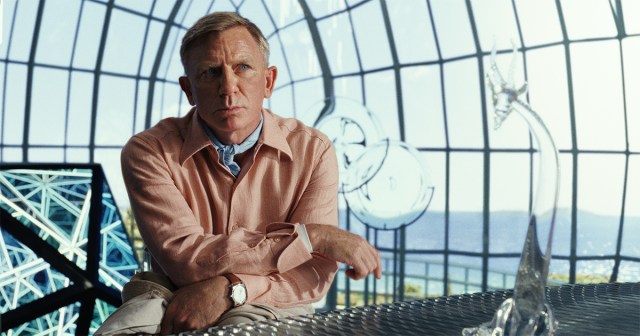TL;DR
- “Knives Out” and “Glass Onion” director Rian Johnson talks about his exciting new Peacock case-of-the-week series “Poker Face,” starring Natasha Lyonne as a mystery-solving fugitive.
- Johnson discusses the challenges of writing a mystery series where the main character has the superhuman ability to recognize when someone is lying, and the importance of crafting standalone TV episodes even in an increasingly serialized era of TV.
- Johnson calls this mystery subgenre a “howcatchem,” where it’s very much about the detective versus the guest star of the episode.
To make new television, it helps if you’ve watched a lot of old television. That’s a lesson evident in Poker Face, the crime-thriller series created by Rian Johnson and starring Natasha Lyonne, which makes its debut January 26 on Peacock.
Lyonne — creator and star of Netflix series Russian Doll — plays Charlie Cale, a woman employed by a casino with a preternatural ability to tell when people are lying.
As Johnson, the writer and director of Knives Out and Glass Onion, explained to Dave Itzkoff of The New York Times, the self-contained installments of Poker Face are a deliberate throwback to a style of TV storytelling that Johnson grew up with in the 1970s and ‘80s.
“That’s when I had control of the television,” Johnson said. “And it was typically hourlong, star-driven, case-of-the-week shows.”
They weren’t only detective programs like Columbo and Murder, She Wrote, he said, but also adventure series like Quantum Leap, The A Team, Highway to Heaven and The Incredible Hulk, which were notable for “the anchoring presence of a charismatic lead and a different set of guest stars and, in many cases, a totally different location, every single week.”
Those ever-changing elements kept things fresh and surprising, he said.
READ MORE: Natasha Lyonne and Rian Johnson Trace the TV Origins of ‘Poker Face’ (The New York Times)
In an interview with Alison Herman for The Ringer, Johnson was asked about similarities between Poker Face and Columbo. “I’d include The Rockford Files and Quantum Leap, but also Highway to Heaven and [the 1978 TV series] The Incredible Hulk,” he told Herman. “It’s kind of got the DNA of all that stuff. And that’s the stuff that I was sitting on the rug in front of my family’s TV watching reruns of every single afternoon as a kid. It’s the TV that I was raised on.”
READ MORE: Rian Johnson Mastered the Whodunit. Now He’s on to the “Howcatchem.” (The Ringer)
“The ‘DNA’ of these shows is certainly there when you watch an episode of Poker Face play out,” Ernesto Valenzuela writes at SlashFilm. “Bill Bixby’s man-on-the-run character of Bruce Banner in The Incredible Hulk, who helps bring justice to whatever town he ends up in, is recreated with a much less gloomy angle with Charlie’s fugitive status. And much like Jim Rockford in The Rockford Files, Charlie is also down on her luck, living in a mobile home in the first episode where she is very much not an officer of the law. Poker Face thrives off of its influences, and the structure’s repetitive nature isn’t a detriment to the show — it’s actually a big reason viewers should tune in every week.”
READ MORE: Rian Johnson Wanted Poker Face To Feel Like A Detective Throwback (SlashFilm)
The show’s resemblance to Colombo is a good thing for fans, Amos Barshad notes at Wired. Johnson, says Barshad, “tiptoed” around the issue at first but the jig was up following an interview in Vulture with The Mountain Goats’ John Darnielle: “I was probably bugging [Johnson] about something and he texted, ‘Want to talk to you about this TV show I’m doing with Natasha Lyonne. It’s basically Columbo with her as the detective,’” Darnielle said.
“To everyone who loves Columbo, this is a great thing,” Barshad writes. “Even beyond the unique format, with the murderer reveal happening first — which means it’s a howcatchem, not a whodunit — Poker Face embodies the rough, throwback, blaringly uncool charms of its spiritual antecedent. Like Columbo, Cale is often going after the rich and powerful, the kind of people who think they shouldn’t have to atone for their sins. Like Columbo, she’s constantly underestimated, a trait she finesses to her ends. Peter Falk’s portrayal of the fumbling detective is an all-timer; the way he pivots from buffoon to razor-sharp gumshoe is a thing of beauty and joy, which means Lyonne has her work cut out for her if she wants to put Cale up on the mantle with Columbo in the TV Sleuths Hall of Fame. But in the handful of episodes available so far (a new one dropped today), it’s clear Lyonne — salty, resilient, irrationally confident — is presenting a very unique kind of crimefighter.”
READ MORE: ‘Poker Face’ Is the New ‘Columbo’—and That’s a Good Thing for Fans (Wired)
In his review for The New York Times, chief television critic James Poniewozik calls Poker Face “the Best New Detective Show of 1973,” noting that Lyonne “has one of TV’s most distinctive presences, with an old-soul rasp and a hipster-next-door bearing that’s simultaneously down-to-earth and cosmic.”
He adds: “The logo may say Peacock — the streaming service that premieres the series on Thursday — but the vibe says NBC weeknights in the 1970s.”
The series, Poniewozik says, draws you in with its retro style, “but the vintage echoes are also deeply thematic. The ‘70s loved a beautiful loser, like James Garner’s Jim Rockford, the ex-con private eye whom the world gave the bum’s rush no matter how many cases he cracked.”
READ MORE: Review: ‘Poker Face’ Is the Best New Detective Show of 1973 (The New York Times)
Poker Face is not a whodunit but an “open mystery” because the audience starts out each episode by seeing who did it, how, and why, before Charlie begins to investigate. Johnson himself calls this mystery subgenre a “howcatchem,” where it’s very much about the detective versus the guest star of the episode, as Johnson also confirms to Brandy Clark at Collider: “These are not whodunits, these are howcatchems. Show the killing, and about Natasha [Lyonne] vs. the guest star.”
As Clark points out, the benefit of these types of shows is that a viewer can jump in at any time, without wondering or worrying if they need to see the previous episodes to understand the story or the plot.
READ MORE: Rian Johnson Explains ‘Poker Face’s Episodic Storytelling (Collider)
Of course, Columbo is the key reference point and an acknowledged part of Daniel Craig’s character Benoit Blanc in the Knives Out mysteries. Johnson told Rolling Stone’s Alan Sepinwall that he binged the entire series during lockdown.
“My big revelation from bingeing it is, I wasn’t coming back for the mysteries. Although the mysteries are fun, I was coming back to hang out with Peter Falk. And in that way, I feel like those shows have as much in common with sitcoms as they do anything else.”
He added, “It’s not really about the story or the content. It’s about just hanging out with somebody that you like, and the comforting rhythms of a repeated pattern over and over with a character that you really liked being with. That’s kind of what I saw when I watched Natasha in Russian Doll, that made me think this could be interesting.”
Lyonne also said that she loved characters such as Columbo, Elliott Gould’s Philip Marlowe in The Long Goodbye and Dennis Franz’s Andy Sipowicz in NYPD Blue, as reported by Deadline’s Peter White.
Speaking at NBCUniversal’s TCA press tour, Lyonne said that Charlie is “floating above a situation trying to crack a riddle, but also an everyman who has their nose to the grindstone and figuring out the sounds of the street.”
Once Johnson had decided to make her a human bullshit detector, rather than a detective or a mystery writer, he realized he had a problem, but this became the key to unlocking how the show might unfold.
“How was the show just not over within the first five minutes, if she can tell when people are lying?” he told Rolling Stone. “I had her give a speech in the pilot about how it’s less useful than you think because everyone’s always lying. It’s about looking for the subtlety of why is somebody lying about a specific thing. And we found really fun ways to play that at different episodes going forward.”
Although Johnson is red hot and you’d think people would be biting his hand to work with him, he says pitching a more old-fashioned TV format got push back.
“I was unprepared for the blank stares. And then the follow-up questions of, “Yes, but what’s the arc over the season?” I think there is right now this odd assumption that that’s what keeps people watching, just because there’s been so much of that in the streaming world that I think people equate the cliffhanger at the end of an episode with what gets people to click ‘Next.’ But TV before incredibly recently, was entirely in this episode mode. So I know it can work because I grew up tuning in every day for it.”
One reason it’s harder to do episodic case-of-the-week stories is the expense and the production challenge. For example, you keep have to bringing in new guests and visiting new locations.
“Holy crap, it was a headache,” Johnson admits to Rolling Stone. “I don’t think we even realized what we’re up against. No standing sets. No recurring characters besides Natasha and occasionally Benjamin Bratt. But we’re very purposefully going for the Columbo approach of big fish guest stars. So every single one of these episodes, we try and get somebody very exciting to play either the killer or the victim. And it was a lot.”
READ MORE: ‘Glass Onion’ Director Rian Johnson Is Giving Us a ‘Knives Out’-Style Mystery Every Week (Rolling Stone)
Indeed, the cast list across the season includes Adrien Brody, Ellen Barkin, Nick Nolte, Stephanie Hsu, Joseph Gordon-Levitt, Ron Perlman, Chloë Sevigny, Lil Rel Howery, Clea Duvall, Tim Blake Nelson, and many more.
Asked during a Q&A panel at the Winter Television Critics Association Presentation whether he writes specifically to those guest stars, he replied: “In the room, sometimes we’d have a placeholder actor, and it would end up being them, or surprisingly someone else. A benefit of this subgenre is that it is the guest star’s episode, and you see them go head-to-head with Natasha.”
Johnson continued to sing the praises of television in front of the ballroom full of television reporters and critics — saying he preferred the “pace” of this newfound process vs. film. Each hour-long Poker Face episode took about three weeks (one for prep, two for shooting) to complete. Compare that with making one film over the course of “several years,” as he put it.
READ MORE: ‘Poker Face’: “Endless Possibilities” For Natasha Lyonne’s Human BS Detector To Keep Solving Crimes Past Season 1 (Deadline)
“I loved that in each episode we’re in a different environment, it’s a whole new cast— it’s like making 10 mini movies,” Johnson told IndieWire’s Tony Maglio. “I literally dove into it like it was one of my movies. I really jumped completely into the deep end of the pool.”
READ MORE: Rian Johnson Now Thinks Making TV Is ‘Much More Fun’ Than Movies (IndieWire)
Johnson has previously directed for TV, notably on two episodes for Breaking Bad including the show finale “Ozymandias.” Episode two of Poker Face, which he directed, was shot in Albuquerque.
“I haven’t been back there since we shot ‘Ozymandias,’” he told Rolling Stone. “It was so much fun being back in town. A lot of the same Breaking Bad crew were on our crew, and it felt like a little homecoming.”
Johnson explained to Angela Watercutter at Wired that while Poker Face does have a throughline, any given episode is a standalone. That was “a hugely conscious choice,” he said, “something that I had no idea was gonna seem so radical to all the people we were pitching it to. The streaming serialized narrative has just become the gravity of a thousand suns to the point where everyone’s collective memory has been erased. That was not the mode of storytelling that kept people watching television for the vast history of TV. So it was not only a choice, it was a choice we really had to kind of fight for.”
READ MORE: Rian Johnson Knows Glass Onion’s Tech Bro Looks Very Familiar (Wired)
Johnson discussed director Robert Altman’s influence on the pilot episode of Poker Face in a Q&A with Joshua Encinias for MovieMaker Magazine:
“Altman’s Nashville was definitely a big reference point for me when I was approaching how to shoot the pilot. I will say each one of the episodes very much has its own personality. Colombo was set in Los Angeles, but he was diving into a different profession every single time, based on what the killer did. There’s an anthropological element to it, where you’re doing a little deep dive into a different world every time. That’s very much a part of the show going forward and we allow ourselves, tonally, to give ourselves over to that. There’s an episode, for instance, set in a regional dinner theater with Ellen Barkin and Tim Meadows that’s absolutely hilarious and very comedic in tone, almost like a Noises Off style. The one I did with Joseph Gordon-Levitt is set in this snowed-in motel within the Rockies and it’s almost more like a Coen Brothers horror movie. But yes, absolutely, in the pilot I was looking at a lot of Altman. Also in terms of the looseness of the style of shooting. It seemed like a fun route to go.”
Another Altman film also provided influence in Poker Face. “Janicza Bravo directed one of our episodes and I think she put a very subtle, intentional California Split reference in her episode,” Johnson said. “We talk about that movie a lot on set.”
READ MORE: We Gently Interrogate Poker Face Creator Rian Johnson, Laid-Back ‘70s Detective Style (MovieMaker Magazine)
Next, Listen to This:
Next, Watch This:
NOW STREAMING — BEHIND THE SCENES OF FAN-FAVORITE SERIES:
As the streaming wars rage on, consumers continue to be the clear winners with an abundance of series ripe for binging. See how your favorite episodics and limited series were brought to the screen with these hand-picked articles plucked from the NAB Amplify archives:
- True (True) Crime: Making Dennis Lehane’s “Black Bird”
- How “The Staircase” Is a True-Crime Drama in All the Ways
- Building the Insane (But Strangely Familiar) World of “Severance”
- “The Old Man:” Measured, Methodical and Jeff Bridges Punches Everybody
- “Bad Travelling:” Blur and David Fincher Rewrite the Rules for Animation


